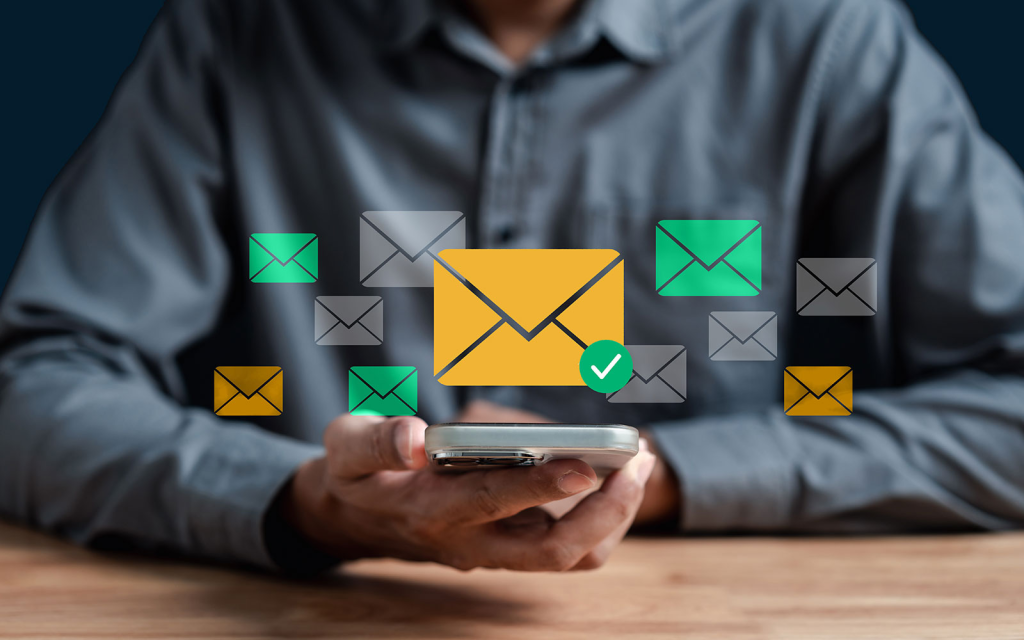
In our increasingly connected world, understanding and implementing online privacy best practices has become essential. From social media accounts to banking applications, our digital footprint expands daily, often in ways we don’t fully recognize. For Filipinos navigating the digital landscape, protecting personal information requires awareness, vigilance, and practical strategies that balance convenience with security.
Understanding the Digital Privacy Landscape
The concept of online privacy best practices has evolved significantly in recent years. What once seemed like paranoid concerns have become legitimate protection strategies as data breaches and privacy violations make headlines globally. Personal information now serves as a valuable commodity, traded and sold in both legitimate and illicit marketplaces.
In the Philippines, where digital adoption continues to accelerate, understanding the fundamentals of data protection has never been more important. The National Privacy Commission reports that Filipinos face increasing risks of identity theft, financial fraud, and unauthorized information access.
Essential Data Protection Strategies
Implementing strong online privacy best practices begins with fundamental security measures that form your first line of defense.
Password Management Fundamentals
Despite being basic security measures, passwords remain critically important:
- Use unique, complex passwords for each online account
- Implement a password manager to securely store credentials
- Enable two-factor authentication whenever available
- Change passwords immediately after service breaches
- Avoid common phrases, sequential numbers, or personal information
These password strategies significantly reduce unauthorized access risk while remaining manageable with the right tools.
Secure Browsing Habits
Your browsing behavior directly impacts your digital privacy footprint:
- Regularly clear cookies and browsing history
- Use private browsing modes for sensitive searches
- Consider a virtual private network (VPN) for public Wi-Fi
- Install trusted browser extensions that block trackers
- Review and adjust privacy settings in your browsers

Device Security Optimization
Physical devices represent vulnerable access points to your personal data:
- Keep operating systems and applications updated
- Use screen locks, biometric security, and encryption
- Install reputable security software
- Perform regular device backups
- Be cautious when connecting to unknown networks
These device-level protections create essential barriers between your information and potential threats.
Data protection on Social Media Platforms
Social media platforms present unique privacy challenges due to their business models and vast data collection practices.
Profile and Setting Adjustments
Take control of your social media privacy through deliberate configuration:
- Audit and restrict who can view your personal information
- Limit data sharing with third-party applications
- Disable location tracking when unnecessary
- Review tagged posts before they appear on your profile
- Regularly check privacy setting changes after platform updates
Remember that default settings typically prioritize data sharing rather than protection, requiring proactive adjustment.
Content Sharing Guidelines
What you share directly impacts your digital footprint:
- Avoid posting identification documents or financial information
- Consider the long-term implications of personal photos and videos
- Be cautious about sharing location data in real-time
- Review the background of images for unintentional information disclosure
- Remember that deleted content may persist in platform archives
Following these online privacy best practices ensures your social sharing doesn’t compromise your security.
Understanding Platform Policies
Knowledge is powerful when navigating social platform privacy:
- Read privacy policies before account creation
- Understand how your data may be monetized
- Know your rights regarding data deletion and portability
- Stay informed about platform data breaches
- Consider alternatives with stronger privacy protections
While privacy policies are notoriously lengthy, even basic understanding helps inform better decisions.

Email Security and Communication Privacy
Email remains a primary target for privacy breaches due to its ubiquity and the valuable information it often contains.
Secure Email Practices
Protect your communications through these methods:
- Use strong, unique passwords for email accounts
- Enable two-factor authentication for email services
- Be extremely cautious with email attachments and links
- Consider encrypted email services for sensitive communications
- Regularly clean out old emails containing personal information
These practices help secure what often becomes a master key to your digital life.
Phishing Awareness and Prevention
Phishing attacks represent major privacy threats:
- Verify sender addresses carefully before responding
- Be suspicious of urgent requests or unusual grammar
- Never provide sensitive information via email
- Check links by hovering before clicking
- When in doubt, contact organizations directly instead of using provided links
Developing a healthy skepticism about unexpected communications significantly improves privacy protection.
Mobile Device Privacy Protection
Smartphones contain vast amounts of personal data yet are easily lost or stolen, creating unique privacy challenges.
App Permission Management
Control what information your applications can access:
- Review permissions before installing new apps
- Regularly audit existing app permissions
- Utilize “only while using” options for location services
- Consider alternatives to apps requesting excessive permissions
- Delete unused applications completely
These permission controls limit unnecessary data exposure through your mobile devices.
Location Tracking Limitations
Your location data reveals surprising amounts of personal information:
- Disable location services when not needed
- Review which apps have perpetual location access
- Consider using maps offline for routine navigation
- Be aware of photo geotagging options
- Understand how location history is stored and used
Location privacy represents a balancing act between convenience and protection.
Financial Information and Shopping Security
Financial data requires particularly robust online privacy best practices due to its sensitivity and attractiveness to criminals.
Secure Online Shopping Habits
Protect financial information during digital transactions:
- Verify website security (look for HTTPS and security certificates)
- Use credit cards with fraud protection rather than debit cards
- Consider virtual card numbers for online purchases
- Maintain a separate email address for shopping accounts
- Monitor transaction notifications closely
These practices help contain exposure during inevitable e-commerce activities.
Financial Account Protection
Safeguard your most sensitive financial information:
- Use unique, complex passwords for banking services
- Enable all available security features and notifications
- Access financial accounts only on secure networks
- Log out completely after each session
- Regularly review statements for unauthorized activities
Financial account compromise often creates disproportionate damage compared to other privacy breaches.
Cybersecurity awareness and Education
Staying informed about evolving threats represents a crucial component of online privacy best practices.
Keeping Up With Privacy Threats
Maintain awareness of emerging risks:
- Follow reputable cybersecurity news sources
- Subscribe to breach notification services
- Participate in privacy-focused online communities
- Pay attention to security bulletins from service providers
- Stay informed about privacy legislation changes
Knowledge provides the foundation for adapting your protection strategies as threats evolve.

Teaching Privacy to Family Members
Privacy protection extends to your entire household:
- Discuss age-appropriate privacy concepts with children
- Help elderly relatives recognize common scams
- Establish family guidelines for information sharing
- Assist with security setting configuration
- Create plans for responding to potential breaches
A family’s privacy is only as strong as its most vulnerable member.
Data Minimization Strategies
Limiting information exposure through deliberate choices helps implement online privacy best practices.
Digital Footprint Reduction
Take control of your existing digital information:
- Regularly search for your personal information online
- Request removal from data broker websites
- Delete or deactivate unused accounts
- Use privacy-focused search engines
- Limit information sharing in online profiles
These actions help reduce what’s already available about you online.
Thoughtful Information Disclosure
Be strategic about what you share going forward:
- Question why information is being requested
- Provide minimum necessary information for services
- Use aliases when full identification isn’t required
- Consider privacy implications before joining new platforms
- Read terms of service regarding data usage before registering
Deliberate disclosure decisions prevent unnecessary information proliferation.
Responding to Privacy Breaches
Despite best efforts, privacy violations may occur, making response strategies important components of online privacy best practices.
Breach Recognition and Response
Know how to identify and address privacy violations:
- Monitor accounts for unusual activity
- Set up alerts for unauthorized access attempts
- Document suspected breaches thoroughly
- Report incidents to appropriate authorities
- Update credentials across potentially affected services
Quick recognition and response significantly mitigate breach impacts.
Recovery and Reputation Management
After breaches, take steps to recover and protect your reputation:
- Freeze credit reports if financial information was compromised
- Consider identity theft protection services
- Monitor for fraudulent accounts or postings
- Request content removal where possible
- Rebuild security with stronger protections
These recovery actions help contain damage from privacy violations.
Recommended Resources
To further enhance your understanding of online privacy best practices, consider these valuable resources:
- Privacy-focused browser extensions and tools
- Reputable VPN service evaluations and reviews
- Digital security guides from nonprofit organizations
- Government resources on identity protection
- Privacy policy analysis tools for service evaluation
FAQ Section
How can I check if my information has been compromised in a data breach?
Several reputable services monitor breach databases and can alert you when your email or accounts appear in known compromises. These include Have I Been Pwned, Mozilla Monitor, and various identity protection services. Registering with these services provides early notification when your data appears in breaches.
What’s the most important privacy practice for the average person?
While all practices work together, implementing unique, strong passwords with a password manager and two-factor authentication provides the most significant protection relative to effort required. This combination prevents the most common unauthorized access methods while remaining manageable for everyday users.
Conclusion
Implementing online privacy best practices doesn’t require technical expertise—just awareness and consistent application of fundamental protection strategies. By taking control of your digital footprint, managing permissions thoughtfully, and staying informed about emerging threats, you create layers of protection that significantly reduce privacy risks. Remember that perfect privacy doesn’t exist in our digital world, but thoughtful practices create meaningful barriers against the most common intrusions. Start with the strategies outlined here, implementing them gradually until they become habitual aspects of your digital life.
